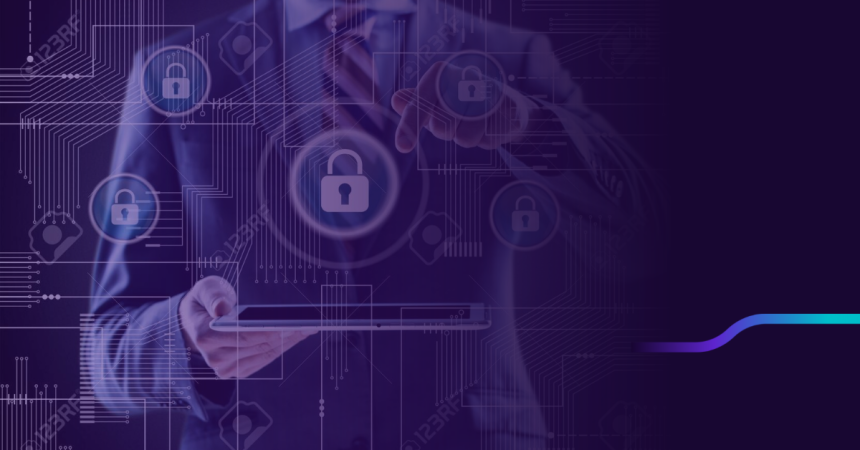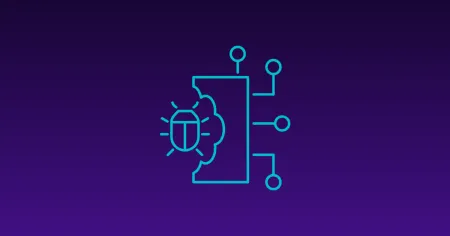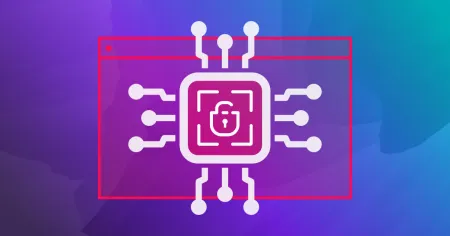Blog
Nov 28, 2023
Advanced Persistent Threats: OffSec’s Comprehensive Guide
Explore key strategies to safeguard against Advanced Persistent Threats (APTs), focusing on prevention, response, and recovery in cybersecurity.
7 min read

The digital age, characterized by rapid technological advancement and interconnected networks, has brought forth complex security challenges, among which Advanced Persistent Threats (APTs) stand out. This comprehensive guide aims to provide the cybersecurity community with valuable insights into APTs. It delves into their definition, origin, impact on cybersecurity, reasons why enterprises should be vigilant, and discusses some of the most notable APTs known today. This guide is crafted to empower organizations in their fight against these sophisticated threats.
Understanding advanced persistent threats
Definition and characteristics
Advanced Persistent Threats are a breed of cyber threats that are distinguished by their stealth, sophistication, and long-term objectives. Unlike typical cyberattacks that seek immediate financial gain or disruption, APTs are meticulously planned and executed to maintain prolonged, unauthorized access to a target’s network. These threats are typically state-sponsored or conducted by highly organized criminal groups.
Key features
- Advanced techniques: Utilizing a range of high-level skills and techniques, APTs often involve custom malware and exploit vulnerabilities unknown to the public (zero-days).
- Persistence: One of the defining characteristics of APTs is their focus on maintaining long-term access to a target’s network, often for months or years.
- Stealth and evasion: APTs are designed to operate undetected, employing methods to evade defensive measures and remain under the radar.
- Targeted: These threats are not random; they are highly targeted, aiming at specific organizations or nations for strategic, political, or financial reasons.
The origin of advanced persistent threats
The concept of APTs originated in the context of increasing internet accessibility and the realization of cyberspace as a potential battleground for espionage and warfare. The early instances of these threats were primitive compared to today’s standards but laid the foundation for the future of cyber warfare.
The early days: Moonlight Maze and Titan Rain
In the late 1990s, Moonlight Maze was one of the first operations to be labeled as an APT. It involved a long-term, systematic penetration of U.S. military and government networks, marking the dawn of a new era in cyber threats. Similarly, Titan Rain in the early 2000s represented another significant APT campaign, targeting U.S. defense contractors and government agencies, showcasing the growing sophistication of these threats.
Stuxnet: a turning point
The discovery of Stuxnet in 2010 marked a turning point in the history of APTs. This complex malware was designed to sabotage Iran’s nuclear program, indicating a shift from mere data theft to actual physical disruption. Stuxnet’s sophistication – its ability to manipulate industrial control systems – was a wake-up call to the world about the potential of cyber operations.
The rise of nation-state cyber operations
Following Stuxnet, there was a noticeable increase in nation-state-sponsored APTs. These operations were no longer solely about espionage but included sabotage, misinformation, and disruption of critical infrastructure. This era saw the rise of prominent groups like APT1, APT28 (Fancy Bear), and the Lazarus Group, each linked to different national interests and geopolitical goals.
Global impact on cybersecurity
Raising the stakes
The emergence of APTs necessitated a fundamental shift in cybersecurity strategies. Organizations and governments had to move beyond traditional perimeter defense to more sophisticated, layered security architectures. The focus shifted towards advanced threat detection, network segmentation, and incident response capabilities.
International cybersecurity cooperation
The global nature of APTs has underscored the importance of international cooperation in cybersecurity. Nations and organizations have begun to collaborate more closely on threat intelligence sharing, joint cybersecurity initiatives, and establishing norms for responsible state behavior in cyberspace.
Economic and political implications
APTs have significant economic and political implications. Intellectual property theft can lead to substantial financial losses and competitive disadvantages. Furthermore, APTs used for political manipulation, as seen in alleged election interference cases, highlight the capability of these threats to impact democratic processes and international relations.
APTs and the threat to critical infrastructure
One of the most alarming aspects of APTs is their potential to target and disrupt critical infrastructure. Attacks like Stuxnet and those on power grids demonstrate the capability of APTs to cause physical damage and societal disruption, raising concerns about the vulnerability of essential services to cyber warfare.
APTs as a tool for geopolitical leverage
APTs have become a tool for geopolitical leverage, used by nation-states to exert influence, disrupt adversaries, and gain strategic advantages. This use of cyber capabilities for geopolitical purposes represents a significant evolution in international relations and conflict.
Specific risks posed by modern APTs
ATPs pushed the boundaries of what cyber defenses must contend with, leading to a paradigm shift from reactive to proactive security measures. The sophistication and persistence of APTs necessitate advanced detection systems, continuous network monitoring, and robust incident response plans. Risks posed by APTs include:
- Intellectual property theft: Many APTs focus on stealing intellectual property, leading to significant financial losses and competitive disadvantages for targeted organizations.
- Data breach and espionage: APTs often aim to access confidential information, which can be used for espionage purposes or sold on the black market.
- Infrastructure sabotage: As seen with Stuxnet, APTs have the potential to cause physical damage by targeting critical infrastructure.
- Political and economic manipulation: Some APTs are used as tools for political manipulation and to influence economic situations, which can have far-reaching consequences beyond the digital realm.
APTs and their effects on the modern enterprise
Risk to intellectual property and confidential data
The threat posed by APTs to intellectual property and confidential data has significant long-term impacts. In industries like technology and pharmaceuticals, intellectual property theft can lead to billions in lost revenue due to lost competitive advantage. Additionally, a breach often results in reputational damage, as the loss of customer trust can lead to a decline in business, negatively affecting market position and share value.
Compliance and legal implications
Non-compliance with data protection laws like GDPR can have serious financial implications, with fines reaching up to 4% of annual global turnover or €20 million. Beyond regulatory fines, organizations also face legal actions from affected parties. A notable example is the Equifax breach, which resulted in a settlement of around $700 million.
The cost of recovery
Recovering from an APT attack is a costly affair. According to IBM’s “Cost of a Data Breach Report” (2020), the average total cost of a data breach is $3.86 million, although this varies by industry and region. The recovery costs include not only forensic investigations and overhauls of security systems but also indirect costs like lost business, reduced productivity, and increased insurance premiums.
Securing Against Advanced Persistent Threats: Proactive Strategies and Best Practices
In the face of sophisticated cyber threats like Advanced Persistent Threats (APTs), organizations must adopt comprehensive and proactive security measures. The following strategies outline key steps to enhance defenses against these complex and stealthy attacks:
Stay informed and prepared
Regularly reviewing threat intelligence reports is crucial for staying ahead of APT tactics. This proactive approach helps organizations adapt quickly to emerging threats, enhancing their ability to respond effectively. OffSec helps organizations stay informed and prepared by upskilling their cybersecurity teams in the most in-demand cybersecurity skills.
Implement multi-layered defense
A combination of firewalls, intrusion detection systems, anti-malware software, and endpoint protection forms a robust defense strategy. Regular vulnerability audits of these systems are essential for maintaining strong security against various attack vectors.
Enhance detection and response
Deploying advanced monitoring tools ensures continuous surveillance of networks and systems. Additionally, developing a comprehensive incident response plan is vital for quick and effective action in the event of an APT attack.
Promote cybersecurity awareness
Educating employees about cybersecurity best practices, especially phishing awareness, is critical. A well-informed workforce can significantly reduce the risk of security breaches.
Maintain secure software and systems
Regular updates and patch management are key to securing software and systems. Keeping these systems securely configured minimizes potential attack surfaces and strengthens overall security.
Collaborate with cybersecurity experts
Engaging with cybersecurity forums and co\nsulting with external experts or service providers enhances an organization’s security posture through shared knowledge and specialized expertise.
Notable advanced persistent threats
APT1: Unit 61398
APT1, believed to be associated with the Chinese military, is known for its extensive cyber espionage operations. This group has targeted a wide range of industries, with a particular focus on intellectual property theft. Its activities have been detailed in numerous reports, highlighting the group’s sophisticated techniques and long-term objectives.
Fancy Bear (APT28)
Attributed to Russian military intelligence, Fancy Bear has been involved in several high-profile cyber operations, including alleged interference in the U.S. presidential elections. The group is known for its advanced malware tools and tactics, including spear-phishing and zero-day exploits.
Lazarus group
Linked to North Korea, the Lazarus Group is notorious for its involvement in cyber heists and disruptive attacks. One of its most famous campaigns was the WannaCry ransomware attack in 2017, which had a global impact, affecting organizations in over 150 countries.
Key takeaways
Advanced Persistent Threats represent a significant challenge in the field of cybersecurity. Understanding their nature, origin, and impact is essential for enterprises to develop effective defense strategies. As these threats continue to evolve, staying informed and vigilant is not just a choice but a necessity for any organization committed to safeguarding its digital assets and maintaining resilience in an increasingly hostile cyber landscape.
Stay in the know: Become an OffSec Insider
Get the latest updates about resources, events & promotions from OffSec!
Latest from OffSec

Enterprise Security
How OSCP Holders Can Lead Their Teams to Greater Cybersecurity Resilience
Champion OSCP training in your organization to build a unified, resilient security team.
Apr 11, 2025
6 min read

Research & Tutorials
CVE-2024-57727: Path Traversal Vulnerability in SimpleHelp Web Application
CVE-2024-57727 lets attackers read sensitive files via path traversal in SimpleHelp. Learn more about how attackers exploit this flaw.
Apr 10, 2025
3 min read

Penetration Testing
AI Penetration Testing: How to Secure LLM Systems
Explore how AI penetration testing enhances LLM security, addressing unique vulnerabilities and improving cyber defenses.
Apr 3, 2025
8 min read